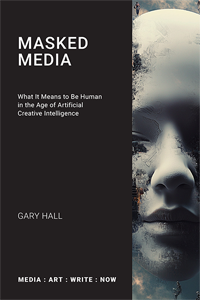The Afterlife of the AI Author
 Wednesday, January 22, 2025 at 9:27AM
Wednesday, January 22, 2025 at 9:27AM In 'The Death of the AI Author', Carys Craig and Ian Kerr endeavor to provide an ontological exploration of 'what an author must be' by moving away from the figure of the romantic authorial self as rights-bearing legal subject. This figure, they argue, is a 'mythic' ideological construct that is also underpinned by legal and philosophical liberalism. And, like liberalism, the romantic author lies at the heart of both copyright doctrine and contemporary ideas of AI authorship, too. According to Craig and Kerr, AI should not be 'treated as special-purpose human beings' producing work-for-hire; nor should it be mischaracterized as a radically individualized creative entity capable of being the 'sole creator and master' of a text. Engaging with some of the most influential thinkers on the subject of authorship and its relation to the law – Martha Woodmansee, Mark Rose, James Boyle, Michel Foucault, Roland Barthes, Nancy Millar, Peggy Kamuf – they maintain that authorship is both a fundamentally human endeavor' and 'fundamentally relational'. It is 'a dialogic and communicative act that is inherently social, with the cultivation of selfhood and social relations being the entire point of the practice'.
Craig and Kerr may view creativity as an ongoing 'collaborative and cumulative process' in which the 'act of authorship cannot be separated from a social context'. However, even as they emphasize relationality, they retain the normative modernist categories that ensure those living persons engaged in this dialogic process of 'authorship with relational autonomy' are kept ontologically distinct from nonliving artifacts. The AI author, they insist, 'bears no ontological resemblance to the human author'. As a result, they offer a vision of authorship that is 'dynamic' and based on 'relational theory', a vision they contrast to both the romantic and machinic author. Yet Craig and Kerr stop short of advocating a radical ontological (and potentially de-liberalizing) understanding of relationality of the kind found in the work of theorists such as Arturo Escobar, Karen Barad and Rosi Braidotti. Their account of the 'ontology of authorship and its social significance' is careful not to critique humanism, for instance. Authorship for them remains 'exclusively within the human domain'. They also reject the possibility of the non-human author, along with the threat of the transformation of copyright law to reward any such nonhuman production. Instead, what they mean by relational is an 'human interchange' that embeds authors-cum-speaking subjects within their otherwise black-boxed social and cultural relations.
Granted, Craig and Kerr acknowledge that AI machines are not 'islands' and that their outputs 'depend upon, and are inextricably linked to, a vast sea of texts authored by human actions, interactions, and creative processes'. However, there is little sense of the human's entangled, intra-active relations with a diverse array of human and nonhuman elements of the kind that creates fundamental problems for the normative modernist division between human and machine. Ultimately, it is hard not to conclude that Craig and Kerr’s 'de-romanticizing' of AI authorship is an effort to preserve a more nuanced version of the Euro-Western, modernist, humanist author – and by extension copyright – rather than to fundamentally challenge it. In their concern to demonstrate that a 'human author as perquisite to copyright' does not necessitate the romantic author, the whole thrust of 'The Death of the AI Author' appears to be to rescue humanism and copyright (and, intentionally or not, the inequalities of economic wealth and power they entail) in the face of what Craig and Kerr see as the mistaken claims to authorship of robots and AI.
 Gary Hall | Comments Off |
Gary Hall | Comments Off | 





